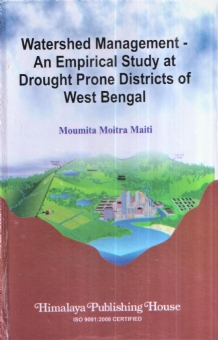Development and sustenance of societies largely depend on the quantity and quality of basic natural resources, mainly water. Economy and social practices in rural India are mostly controlled by availability of water. All the human activities in their interactive combinations with nature and ecosystem, are badly affected by water scarcity.
In spite of receiving good amount of annual rainfall, the region under study, experiences serious water scarcity during dry season due to increasing concentration and variability of rain, speedy drainage and low retention on undulating terrain and thus is designated as drought prone district. In the context of global climatic change and increasing scarcity, comprehensive water management is necessary based on a clear understanding of operation of hydrological system in a basin scale in a way to prepare a detailed water budget. In the present work, careful attempts have been made to understand the interaction of rainfall, land, soil and landuse at mouza level leading to seasonal runoff, evapotranspiration and infiltration. A water harvesting proposal has been formulated based on through estimation of water budget for check dam construction and rooftop water harvesting. Rational reservoir size for both check dam sites and rooftop water harvesting has been designed that may successfully address worst drought in 5, 20, or 50 years recurrence interval. Suitable sites for excavating ponds, plantations and contour bundings are selected using spatial analysis techniques of GIS.
This work will be of great help to researchers, hydrological engineers, local planners and administrators who work on the similar field elsewhere to formulate strategies and policy guidelines for building resilience to global climatic change and related water scarcity.
Contents –
1. Introduction
2. Rainfall Characteristics
3. Basin Hydrology
4. Water Budgeting in Basin Scale
5. Problem of Water Scarcity
6. Conclusion and Recommendations
Appendix
Bibliography
Author Index and Subject Index






